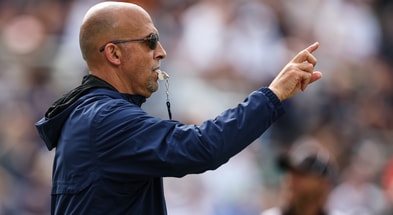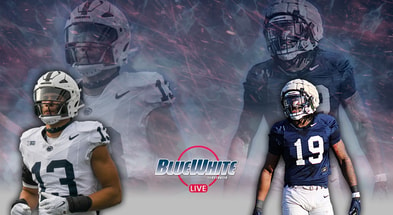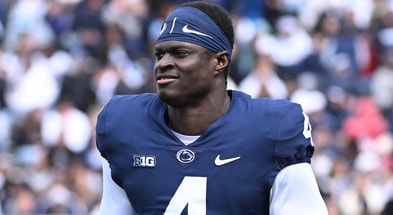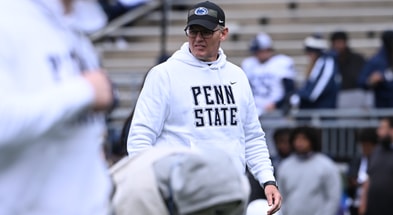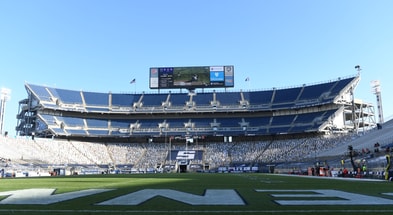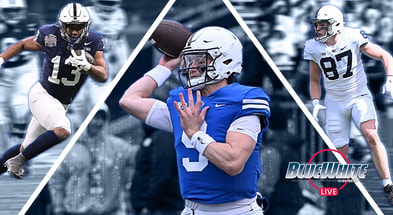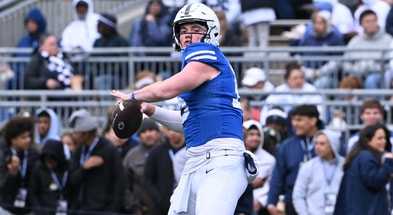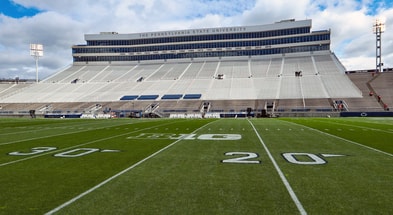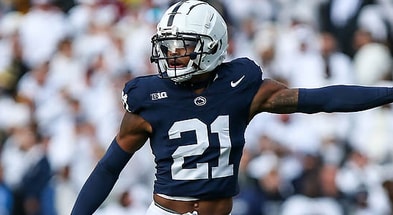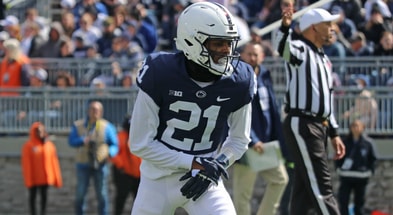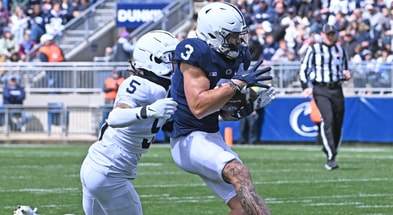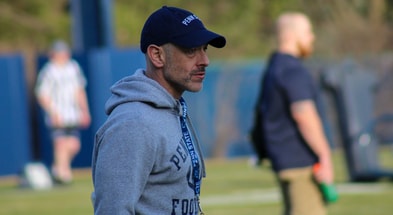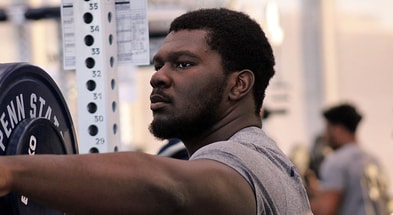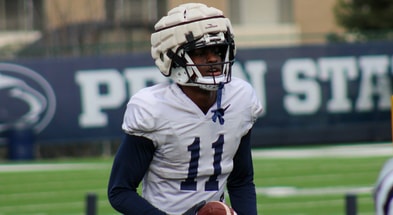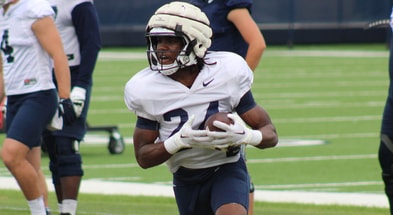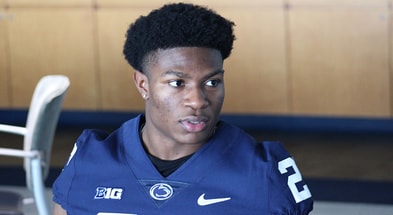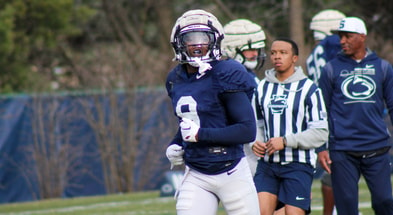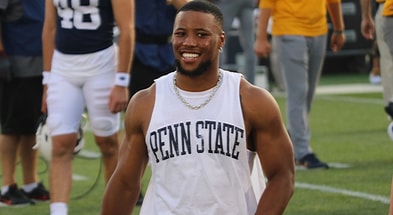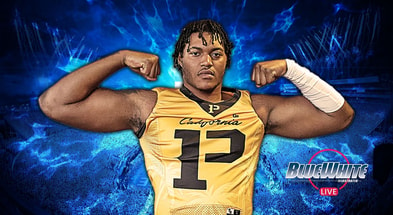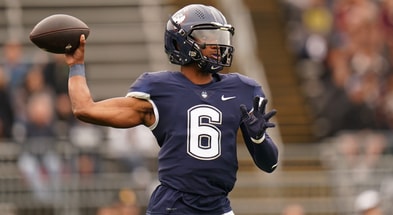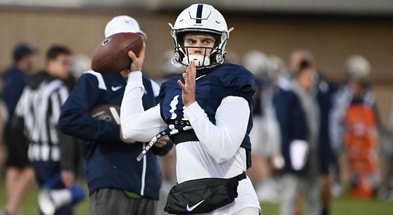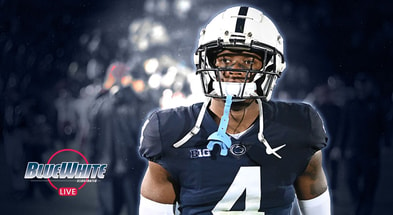Penn State Prototypes: Building the perfect interior linemen
Much has been made, and rightfully so, about Penn State’s struggles recruiting along the offensive line. To better understand what teams are looking for and what Penn State needs, here is a handy guide to understanding positional prototypes along the offensive line.
We already looked at tackles in a previous installment; now, we’ll take a look at the guard and center positions today. The fundamental skills along the offensive line vary but do not stray too far from what we’ve already discussed. Also, guard and center positions can be universally lumped into “interior” offensive linemen because this group’s standards are essentially universal. With that in mind, we’ll still break out centers to explain the allowances for less-than-ideal prospects at that position.
Not a member of Blue White Illustrated? Join for just one dollar!
One final note; There’s much more latitude for various body types and skills on the interior, and they can change in size and shape based on scheme or coaching preference. We’ll set a universal “ideal” with the understanding that there is nuance beyond that.
Penn State Prototypes: Guard
Ideal Measurements:
Height 6-4 to 6-5
Weight: 320-335 lbs
Reach: 33+ inch arms
Measurements Explained:
Earlier this week, when we talked about the ideal length of offensive tackles, I fibbed a bit. I still eventually told you that 34-inch arms are the standard measurement for 6-6 offensive linemen, but in my ‘Ideal Measurements,” I set the number at 33. Why? Because players like Joe Thomas of the Cleveland Browns (Hall of Fame eligible in 2023) played the position at the highest level with slightly sub-standard arm length.
This observation serves us twofold; Not only does that serve as a reminder to never overlook a player because of a slight variation from the prototype, but it’s also a warning that said player needs every other trait on the list in spades. Is Thomas an outlier? Yes, but it’s fair to argue either way.
All of that is to say that 33-inch arm length is the standard set for interior linemen, with 32 inches being acceptable. Length is still significant when making first contact with defensive linemen, as is the ability to strike first in the run game.
Penn State Prototypes: Height
These traits and skills are interconnected, so there is some overlap in the description and function of different facts to lineman composition. Height isn’t always a barrier to playing on the interior, but a tall player that isn’t seen as a tackle first needs a good reason to play inside. A player taller than 6-5 and playing on the interior likely lacks the length or athleticism to play outside. If he’s taller than 6-5 and plays upright and is getting looks at guard, your team is desperate
The goal, as always, is maximizing reach and low pad level. Without the need to protect in space like tackles, guards don’t need the extreme length. Instead, their build is focused more on power. A wide, heavy-set frame is essential, as it allows these players to pack on lower body strength and mass.
Positional Skills: Power
No matter which part of the offensive line we examine, expressive lower body strength is essential. Yet, if there is one spot that needs to have the size and strength to move other large humans against their will, it’s the guard. Yes, the ideal tackle has the raw force of a guard, but you can get away without that if you’ve got nightclub bouncers lined up next to them on the interior. Guards can also combo block with both the center and the tackle, making them ideal for delivering power.
As with every positional prototype, functional strength trumps size. But depending on the scheme, there’s no limit to the size of an interior blocker, with some man-blocking methods employing players weighing upwards of 350 pounds. Just be warned that you’re sacrificing something else for every pound over a player’s ideal body weight.
Talk about this article in the Lions Den!
Penn State fans are painfully aware that this was the biggest shortcoming of the group up front in 2021.
Posterior Chain and Hip Flexibility
Like tackles, having excellent flexibility and mobility is critical to being a superior blocker. As we alluded to earlier, the difference is that you can get away with having a slightly stiff, upright tackle as long as they function well in space. Conversely, a rigid, upright blocker on the interior will be ineffective once they face a pliable, athletic defensive tackle that consistently wins the battle of leverage.
Missed the first article? Check out tackle prototypes here!
A lack of flexibility also leads to a lack of balance. Truly great run blockers are not rabid, wild men who recklessly launch themselves at their opponents. Players who play too far out over their toes are easily shed by defenders and routinely find themselves on the ground. Truly great blockers have a cold, calculated approach bent on destruction thanks to power, technique, and balance. Excellent core strength and stability to withstand impact are necessary to do that.
Quickness and Agility
At some point in every scheme, all five offensive linemen will block players at the second level of the defense. Whether they be odd (three and five-down defensive linemen) or even (four-down defensive linemen), the goal of defensive fronts is to make that math challenging for the offense. If we were to grossly generalize offensive line play, which is a mistake entirely, interior linemen are often asked to block linebackers and safeties.
Did you love the idea of having a 354-pound guard earlier in our discussion about power? Now that behemoth player has to block a mobile target and secure a block for the running back to have a chance at a big play. Quickness is essential for every player on the line. If they lack that, their size and strength are pointless.
Agility is also vital for blocking schemes that pull offensive linemen, and no position pulls more than guard. Like tackles that have to step back in pass protection, guards have to be agile enough to open their hips and run laterally in an instant when pulling. Their ability to secure the point of attack against faster players is essential to the success of those plays. Guards are not exempt from pass protection and need the agility necessary to kick slide properly. Thanks to feindish blitz schemes, these players need to be fleet-footed enough to change direction and pick up fast players trying to expose the gaps in protection.
Penn State Prototypes: Guard
Ideal Measurements:
Height 6-3 to 6-5
Weight: 310-335 lbs
Reach: 32+ inch arms
Measurements Explained
As noted earlier, centers and guards have essentially the same function, so their ideal body type and positional skills are the same. So what comes next is an explanation of the differences and allowances that the center permits.
Communication
It’s widely known that the center position is the central nervous system of the offensive line, acting as a conduit for the quarterback to set protections and communicate with the rest of the line. We have been talking strictly about physical attributes in these articles, but this process is so integral to the position that it’s critical to mention.
Next, the closer you get to the center of the line of scrimmage, the less space there is for the defense to operate in. That’s the essential function of the offensive line; create an impenetrable wall in front of the quarterback or ball-carrier. With the reduction in space comes a decrease in the need for length and more latitude in body type. Shorter players with shorter arms can excel at center because even if they face a nose tackle, that player is lined up directly over them, reducing the need for reach and increasing the power demand. If the defensive tackle lines up away from the center, he’s likely the guard’s responsibility first.
Size
This point is where center gets tricky. A center facing a four-down front will most likely be the player reaching the second level of the defense after their double-team blocks along the line of scrimmage. Their need for mobility increases in these situations, so less weight, and more athleticism are acceptable. In an East division that has classically seen four-down fronts, Penn State has opted for smaller, quicker centers.
The center is free to help, pull, and reach with athleticism with powerful bullies at guard. Centers are also a part of double-team blocks most frequently in pass protection. Again, if the defense lines up in a three-down front, the center will likely have double team help from one of the guards or will help with the closest defensive tackle in a four-down look.
All of that changes and gets very complicated when you factor in blitzes, stunts, and odd formations that the defense can present. Our gross generalization cuts through those things to the most common situations but isn’t perfect.
Penn State Prototypes: Variations
The positional skills also change when facing a three-down front in run-defense. Nose tackles are the biggest, most powerful players on the football field and absorb two blockers. When faced with one-on-one blocks, smaller centers will struggle to make a difference against these players. Great centers will still find a way to win with a combination of help, technique, and athleticism but having more size and strength is helpful in these situations.
Ultimately, having three athletic, strong players somewhere around 320 pounds is the end goal of an offensive line. Pair that with two prototype tackles, and that offensive line can effectively execute every blocking scheme and defend any formation. Unfortunately, finding a group like that, who can also pass protect, is akin to finding buried treasure. It’s not impossible, but it’s so rare it might as well be a myth.
